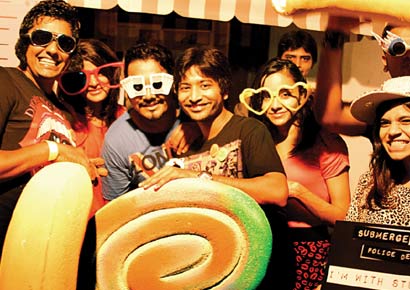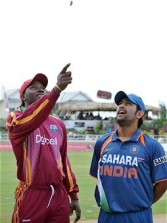New Delhi:
India’s latest foreign coach Michael Nobbs is a believer in karma. Sprinkling his analyses generously with Buddhist spiritualism, the 57-year old Australian realises the tediousness of the task ahead of him at the national camp underway at Bangalore. While winning the players’ trust is his aim, developing a workable roadmap for the sport’s resurrection in the country is his single-minded ambition, writes Uthra G. chaturvedi
‘When you lose, do not lose the lesson.’
The Dalai Lama has nothing to do withIndian hockey. With its lack of stars and success alike, the sport these days doesn’t even merit a recognisable name among its most devoted followers. Yet, the spiritual figure may well have been speaking of the team when he spoke those words. At least, Michael Jack Nobbs believes so.
As the newest coach of Indian hockey, Nobbs knows what he is up against when he walks out to the training ground at the Sports Authority of India’s Bangalore centre every morning — a long string of losses, a longer list of lessons. Armed with a five-year contract to pull Indian hockey out of the seemingly bottomless pit it has dug itself into, Nobbs is aware that how the next 60 months pan out will depend largely on what happens in the next six.
“The immediate target is the Olympic qualifiers, no doubts about that,” he says of the February 2012 test, even as the 48 probables – divided into two groups – who he will be relying on to achieve that, warm up and cool down in the background. “But I am a firm believer in karma. What goes around ultimately comes around. It’s a cycle that cannot be broken. If enough hard work is put in, the results are bound to come. When they do, is another matter. But success cannot be denied to those who seek it with full dedication,” he adds, striking a spiritual tone that’s more Indian than his native Australian.
In their first training schedule under Nobbs, the Indian hockey players are least bothered about the new coach’s beliefs. Sweating it out on the turf for an average of five hours every day, it is more important for them to get the basic facilities that will increase their performance and output in competition. And for that, they are wary, but willing to give Nobbs a chance.
Progressively cautious
The wariness is understandable. Nobbs is the fourth foreign coach to join the team in eight years and the tenures of each of the previous three have made players progressively cautious. If Gerhard Rach was the target of collective contempt, Ric Charlesworth was shooed away by the establishment even before the players could know what he thought. Jose Brasa walked into a welcome full of doubts, but he managed to make players comfortable. And by the time he left, most of them treated him as an elderly figure they could trust, both personally and professionally; and were eventually sad to let go.
Nobbs is as yet an unknown entity. His methods are yet to be clear to most players, and his plans are yet to be fathomed, or accepted. “We are happy that he has a long-term contract. But it’s been less than a month of training under him. It’s a two-way street. He needs time to know us and we need time to understand him,” says Arjun Halappa, among the senior-most players in the current squad.
There is also an uncomfortable feeling among several players that Nobbs’ appointment with Indian hockey had a lot to do with the backing he had from the Punjab lobby, and so he is perhaps closer to them. “There are many factors at work here at the moment. We will only know about how serious he is and how much of an independent authority he wields after the Asian Champions Trophy, the first tournament he will be in charge of. Till then, let’s face it, there will be doubts. The history of groupism in Indian hockey forces us to be wary,” a player says.
‘Show me the money’
Nobbs, though, knows where he wants the players – on posters, hoardings and magazine covers. “They are the public face of the sport. They sell the game, they bring in support, they bring in the fans and the next generation of players. They are the heroes. Most importantly, they are the ones who will bring in the money. And, let’s accept it, money is very important. Why would anyone play a sport if there is no money,” he asks. “I want the players to own the team. When you feel ownership of something, you work hard to preserve it,” he adds.
Unfortunately, this is precisely what Indian administrators have always tried to stifle. Making players into heroes is abhorrent to the hockey establishment in India. “I don’t think that will happen. If a player wants to go for a couple of days between training for a personal assignment, something that is legal, will raise the profile of hockey and help the sport in the long run and bring in public attention – I won’t stop him,” Nobbs says. Is that an allusion to IHF’s World Series Hockey? He refuses to say, but smiles lightly before adding, “Players like Sandeep, Sardar, Adrian are an asset to any team. I won’t want to lose them,” he says, hinting at a pro-player approach.
At the same time, he knows he will have to draw a line. It’s an easy trap to fall into — when players become stars, they sell the sport much better. But then, they try to hold on far too long because of the perks. “You cannot ignore them either because they are seniors. That kills a large part of the next rung. When they go, the third rung is thrown straight into the deep end. The team then starts losing and the sport’s profile goes down. It takes a few years to get back on top,” he explains.
That’s what happened to Australian hockey at one point. That’s what also happened to cricket in Australia. “When do we push the middle rung to the top and ease out seniors, striking that balance will decide who stays on top for how long,” he adds.
Emphasis on fitness
Irrespective of how they wield their sticks, strategically placed cones are what define every session during training — running around them, sprinting between them, touching base with them at various speeds. Nobbs’ emphasis on making fitness a priority has got a definite thumbs-up from the players.
Already, most admit to feeling better when they step on to the field. Exercise physiologist David John, specifically asked for by Nobbs, has profiled all the players and worked out training schedules for them. “Fitness needs to be upped. A lot of players have been complaining of being tired, and that’s a good thing. It means things are on the right track,” Nobbs says.
Likely to rejoin the camp over the weekend, John’s training methodology is spoken of highly by them. Sometimes, players are asked to try and hold back their training partners from running away – to build resistance. “The exercises he has designed do not get boring. At the same time, our agility has increased. The sooner he comes back, the better,” is the common refrain from all the players.
The skills aspect, though, is not being ignored. Players often play 3 or 4 to a side in a small area – less than a quarter of the turf – and are supposed to pass to their team mates without losing the ball. At last count, they had managed to hold on to it for 17 passes.
An Olympic dream
“Indian players are skillful, up to international standards. They don’t need to be told about the skills part. I am trying only to assess their individual levels,” he says as players wrap up the day’s session and head for a swim.
Before leaving, Nobbs wants to reveal his one wish. “One day, I want to see the Indian hockey team on the top of the podium in the Olympics, even if I’m not the coach,” he says.
“I want to experience Indian hockey’s triumph as a spectator from the stands and feel the satisfaction that I had a little part to play. And it will happen. Remember karma? If anyone deserves success for their hard work, it is these boys.”
In The waiting line
The National Championships in Bhopal may not have been the treasure trove of hidden talent that was expected, but the tournament did give a number of players a chance to be part of the national camp and try to impress the team management.
Banmali Xess: The youngster from Jharkhand was named the best forward at the nationals, and with good reason. His passing and ball control was unlike anyone else in the competition — including some of the biggest names — and there was hardly an occasion when he had the ball and failed to penetrate into the D. But inexperience meant he ended up muffing a lot of chances. His presence would push the seniors to look nervously over their shoulders, which is a good thing.
Prabhdeep Singh, Ramandeep Singh and Akashdeep Singh: Part of the Punjab team that finished with a bronze in Bhopal. The triumvirate were instrumental in Punjab’s advancement to the semifinals in the Senior National Hockey Championships. And even in a team that had several big names in its ranks, the youngsters managed to hold their own, impressing with their skills. Raw and still to develop, the big-match strength and temperament.
Chinglinsana and
Kothajit Singh: The Manipuris are the few remaining players from the state on the national stage that once gave Indian hockey some of its toughest players. But while Kothajit manages to hold up the mid-field play for his employers Indian Oil, Chinglinsana, with his immense speed and a gymnast’s agility, is a potential striker. At 21, Chinglinsana also has age on his side and so far during training, has managed to hold his own with the seniors.
Nithin Thimmaiah and Pradhan Somanna: Two exciting prospects from the traditional nursery of Coorg. Good on the wings and keen students of the game and quick learners. Need to add strength and stamina to their skills. Regulars for Karnataka at the age group level, both caught the selectors’ eye during the recently concluded National Championships. A fantastic attacking combination for the future, both are keen to hone their skills as flankers.
Dharamvir Singh: Once considered an exciting India prospect only to gradually fade away, the Punjab forward has managed to raise himself back into contention with decent domestic performances. He was the key to Punjab winning the bronze medal at the Nationals and despite the couple of years that he has lost, his intensity during training proves he means business this time around.
Kamaldeep Singh: No one in Indian hockey has made a comeback after being out in the wilderness for five years. That’s more than their entire international career for many players. But for someone who was always considered a talent, even if a little raw, Kamaldeep was banned for a year after a violent incident during the PHL. He perhaps owes this one chance to himself
source:http://www.expressindia.com / by Uthra G. Chaturvedi / Aug 14th, 2011







